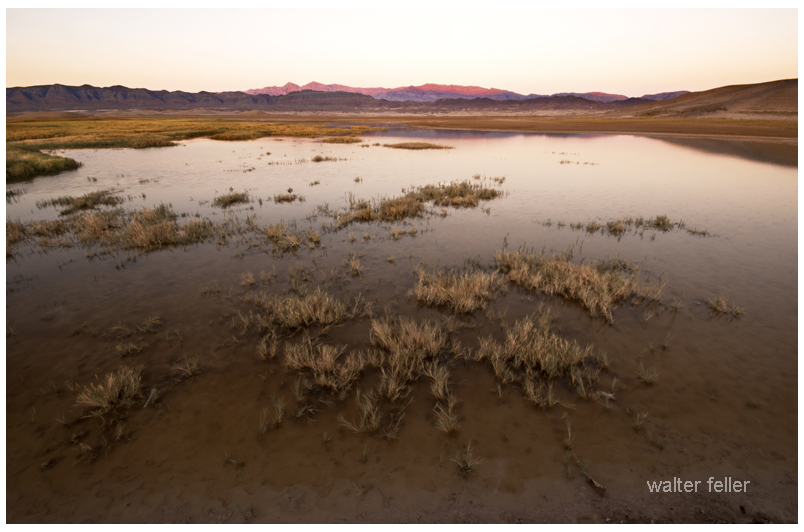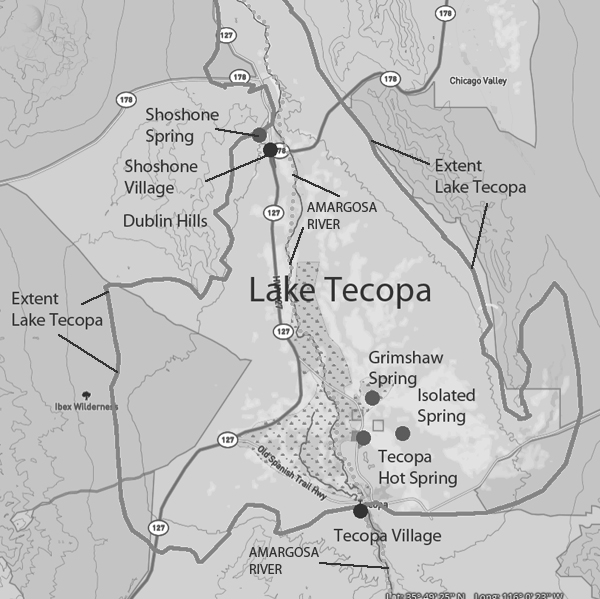Lake Tecopa was once a vast body of water located in what is now southeastern California, near Death Valley. During the Ice Age, when the climate was much cooler and wetter, rain and melted snow filled the basin, creating a long-lasting lake. It existed for thousands of years, supporting various life forms and leaving clues about the region’s ancient past.
The lake was home to tiny aquatic creatures such as snails, clams, and microscopic algae. Larger animals, including mammoths and other Ice Age megafauna, gathered along its shores to drink. Over time, layers of mud and clay accumulated at the bottom, trapping fossils and preserving a detailed record of the lake’s ecosystem. These sediments also captured evidence of significant volcanic events. One of the most well-known ash layers in the Tecopa basin originates from a massive eruption of the Yellowstone hotspot approximately two million years ago. This ash, which traveled hundreds of miles, settled into the lakebed and became part of its geological history. Other eruptions also left behind layers of light-colored ash, which now serve as chronological markers for scientists studying the ancient environment.

Eventually, the lake’s natural barriers eroded, allowing water to escape and connect with what is now the Amargosa River. This event permanently drained Lake Tecopa, leaving behind a dry basin filled with clay and sediment. Today, the remnants of the ancient lake tell the story of changing climates, shifting landscapes, and the forces that shaped the Mojave Desert. Scientists continue to study the lakebed’s layers, using fossils, ash deposits, and sediment patterns to better understand the past and how this once-thriving lake disappeared into history.Lake Tecopa was once a vast body of water in what is now southeastern California, near Death Valley. During the Ice Age, when the climate was much cooler and wetter, rain and melted snow filled the basin, creating a long-lasting lake. It remained for thousands of years, supporting various life and leaving clues about the region’s ancient past.

The lake was home to tiny aquatic creatures such as snails, clams, and microscopic algae. Larger animals, including mammoths and other Ice Age megafauna, gathered along its shores to drink. Over time, layers of mud and clay built up at the bottom, trapping fossils and preserving a detailed record of the lake’s ecosystem. These sediments also captured evidence of major volcanic events. One of the most well-known ash layers in the Tecopa basin comes from a massive eruption of the Yellowstone hotspot around two million years ago. This ash, which traveled hundreds of miles, settled into the lakebed and became part of its geological history. Other eruptions also left behind layers of light-colored ash, which now serve as time markers for scientists studying the ancient environment.
Eventually, the lake’s natural barriers eroded, allowing water to escape and connect with what is now the Amargosa River. This event permanently drained Lake Tecopa, leaving a dry basin filled with clay and sediment. Today, the remains of the ancient lake tell a story of changing climates, shifting landscapes, and the forces that shaped the Mojave Desert. Scientists continue to study the lakebed’s layers, using fossils, ash deposits, and sediment patterns to understand better the past and how this once-thriving lake disappeared into history.
